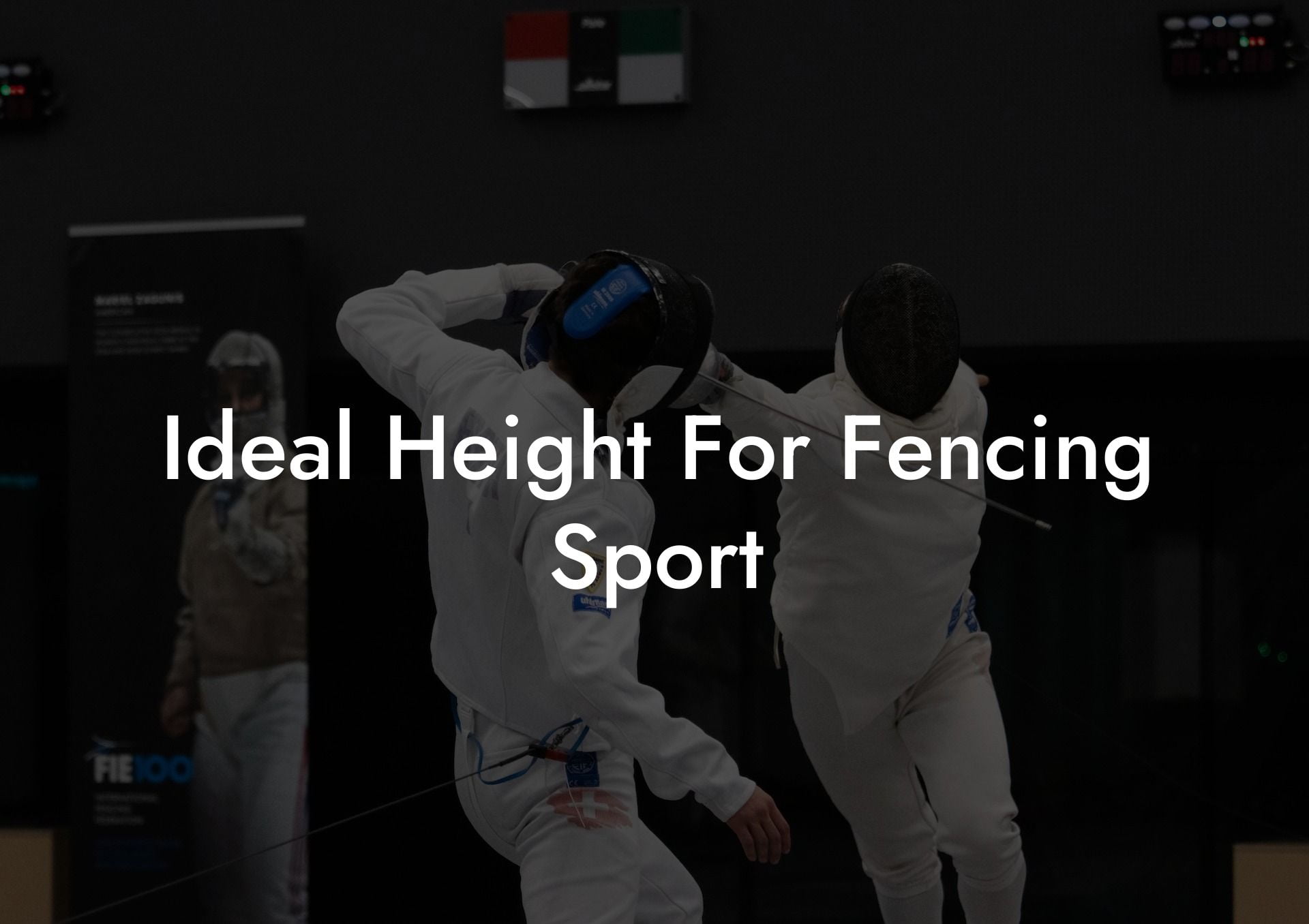Have you ever wondered if there's an ideal height for excelling in the fencing sport? While fencing may seem like a sport where physical attributes could play a vital role in an athlete's success, it's not as straightforward as it might appear. In this article, we will discuss the significance of height in fencing, its advantages and disadvantages, and how you can make the most of your height to succeed in the sport.
Ideal Height For Fencing Sport Table of Contents
Height in Different Fencing Styles
Advantages of Being Tall in Fencing
Height in Different Fencing Styles
Foil
In foil fencing, height can provide a slight advantage in terms of reach, especially for taller athletes. With a longer reach, taller fencers can more easily initiate attacks and score points, and they have more reach when trying to parry their opponent's attacks. However, foil fencing relies heavily on technique, speed, and precision, and these skills can be developed by fencers of any height.
Epee
Epee fencing also benefits from a longer reach, as taller fencers have an easier time attacking and defending at a distance. However, epee fencing is a more direct style, where quick reflexes and the ability to adapt to an opponent's strategy are critical. Just like in foil, a fencer's technique and accuracy play a more significant role than height in this style.
Sabre
Sabre fencing is a fast, aggressive style that emphasizes speed and aggressive attacks. While height can provide some benefits in terms of reach, the importance of footwork and blade work is paramount. A smaller fencer with excellent footwork and attack timing can often negate the advantages a taller fencer might have in sabre fencing.
Advantages of Being Tall in Fencing
- Longer reach in attacks and defense
- Better distance control during bouts
- Inherent intimidation factor
Disadvantages of Being Tall in Fencing
- May struggle against lower fencers who are quicker and better at closing the distance
- Larger target area for opponents to attack
- Often perceived as less agile than shorter fencers
Making the Most of Your Height in Fencing
Regardless of your height, there are ways to make the most of your build in fencing. Here are some tips:
- Focus on technique and accuracy: Develop a solid foundation in footwork, blade control, and tactics, as these skills are vital for any fencer to succeed.
- Learn from successful fencers of similar height: Observe and study successful fencers with similar body types to understand how they use their height to their advantage.
- Play to your strengths: If you're tall, use your reach advantage to control the distance and keep your opponent at bay. If you're short, work on closing the distance and utilizing your speed and agility to surprise your opponent.
- Don't let stereotypes define you: Regardless of your height, pursue fencing with passion and dedication, and you'll have the potential to succeed.
Ideal Height For Fencing Sport Example:
Imagine a match between a tall and short fencer in epee. The tall fencer may have the advantage of distance management and attacking with a longer reach. However, the short fencer can use their speed and agility to close the distance quickly, scoring hits on the taller fencer before they can react. As the bout goes on, the tall fencer must adapt their strategy to counter the short fencer's quick movements, while the short fencer must remain vigilant to avoid getting hit by the taller fencer's longer reach.
In conclusion, while height can play a role in fencing, it's not the be-all and end-all factor in determining a fencer's success. A dedicated and skilled athlete can overcome any physical barrier with the right mindset, training, and strategy. Keep practicing, learn from those who excel in your chosen fencing style, and remember that passion and hard work supersede any physical attribute. If you enjoyed this article, please feel free to share it with your fellow fencing enthusiasts and explore the other resources and guides available on Anchorage Fencing Club.













